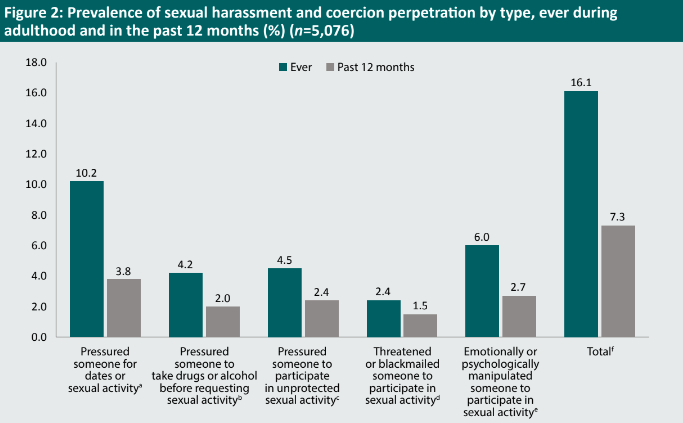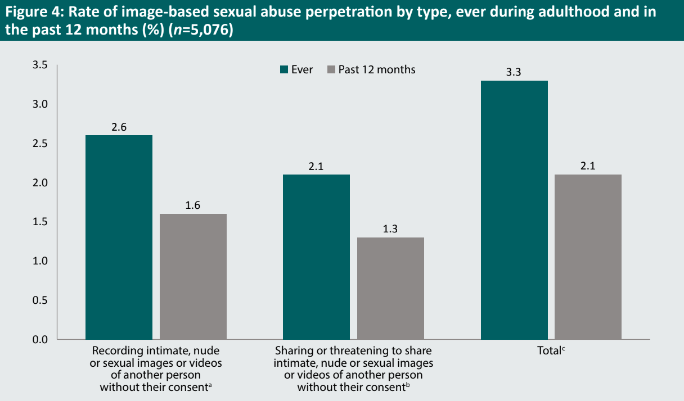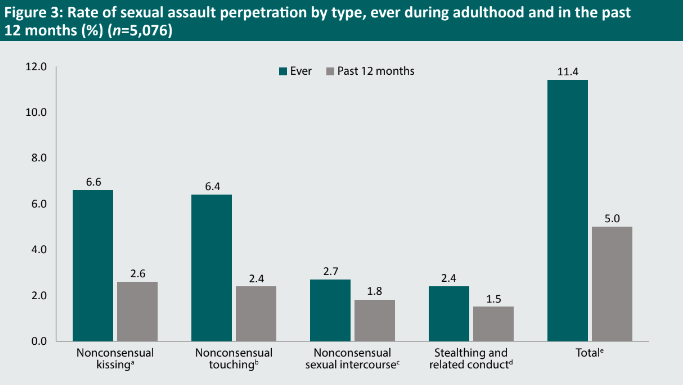Confronting new research has found one in five Australians between 18 and 45 have committed sexual violence since becoming an adult.
One in 10 had done so in the past year, according to an Australian Institute of Criminology study released overnight based on a survey of more than 5000 people.
While "shockingly" high, according to two domestic and family violence researchers not involved in the study, the authors warned the real figures could be even worse.
READ MORE: 'Beautiful, loving' English teacher identified as woman found dead at Melbourne waste facility
The institute framed it as one of the most significant pieces of Australian research looking at perpetrators of sexual violence, as opposed to the more widespread victim-based approach.
AIC deputy director Dr Rick Brown said the approach was important for understanding the drivers of sexual violence and focusing on preventing perpetrators rather than victims.
"These findings fill an important gap in the Australian evidence base, while also contributing to efforts to monitor and evaluate approaches to reducing sexual violence by providing more accurate estimates of its rate of perpetration," he said.
About one in five adult women and one in 15 adult men in Australia have been victims of sexual violence since the age of 15, according to the Australian Bureau of Statistics.
Broadly, the AIC study found 22.1 per cent of respondents had perpetrated one or more of the forms of sexual violence since turning 18 and 9.9 per cent had done so in the past 12 months.
They divided responses into three categories: sexual harassment and coercion, sexual assault and image-based sexual abuse.
READ MORE: Former race driver's bankruptcy led to 'medley' of drug abuse, court hears
Harassment and coercion was by far the most common form, with 16.1 per cent of respondents admitting to having done so as adults and about 7.3 per cent in the past 12 months.
Those figures dropped to 11.4 per cent and 5 per cent in the past year for sexual assault and to 3.3 per cent and 2.1 per cent for image-based sexual violence.
The researchers drilled down even deeper, detailing the most common forms of sexual violence in the past 12 months: pressuring someone for dates or sexual activity (3.8 per cent); emotionally or psychologically manipulating someone to participate in sexual activity (2.7 per cent); non-consensual kissing (2.6 per cent); non-consensual touching (2.4 per cent); pressuring someone to participate in unprotected sexual activity (2.4 per cent); engaging in image-based sexual abuse (2.1 per cent); and non-consensual sexual intercourse (1.8 per cent).
READ MORE: Mum of kids allegedly left in car by dad thanks service station staff
Men were significantly more likely to have committed all forms of sexual violence as well as to have done so more frequently.
Researchers did their best to account for biases usually found in survey-based research but even still feared the numbers could be under-reported, particularly given more than 550 people skipped at least one question.
"The estimates in this study are drawn on self-reported data and may overcome many of the issues inherent in official data held by police and criminal justice agencies, which have been relied upon to gauge the prevalence of sexual violence perpetration in Australia," Brown said.
"Perpetrators who have contact with the criminal justice system represent only a small proportion of those who have perpetrated sexual violence.
"The vast majority of offences and perpetrators are never reported to police, and attrition rates are high among cases of sexual violence that do come to the attention of police."
More than 36,000 people reported sexual assaults to police last year, according to the ABS, a record high and 12th straight year-on-year increase.
Writing in The Conversation, Monash University Professor Kate Fitz-Gibbon and Australian National University research fellow Hayley Boxall described the findings as "shocking".
"Perpetrator research is a difficult undertaking, particularly when asking about behaviours such as domestic, family and sexual violence," they wrote, calling for more detailed insights about who engages in sexual violence and under-researched groups.
"Social desirability bias means people may be unwilling to answer such questions truthfully for fear of making themselves look bad. Perpetrators can also deny or minimise their behaviours.
"But we cannot effectively respond to and prevent what we do not measure."
The AIC authors said the age group in focus was chosen because they were likely to have had easy access to the internet during their teenage and early adult years, with the goal of understanding the "relationship between pornography use and sexual violence perpetration and victimisation".
They noted about 85 per cent of respondents identified as heterosexual and 15 per cent as LGBTQI+, while people born overseas and those from a non-English-speaking background were under-represented.
According to the AIC, similarly high estimates of perpetrator numbers have been found in some overseas studies but others vary wildly.
A review of 113 European studies found perpetration rates ranging from 0 to 80 per cent for boys and men, while a review of 78 studies in the US and Canada found a rate of almost 30 per cent for college men.
Support is available from the National Sexual Assault, Domestic Family Violence Counselling Service at 1800RESPECT (1800 737 732).







